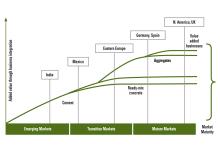
Christopher Reynolds, senior operations project analyst at Bank of America, said there has been a conservative and decelerated approach to large M&As in the sector since 2014, and this is likely to continue in the near-term in the wake of the global pandemic with companies shoring up balance sheets and focusing on self help measures.
"I don't have a crystal ball but I think we will see continued portfolio refinement and an opportunistic approach to smaller acquisitions," he said. "We may however see disposals as people look to trim leverage positions and strengthen the balance sheet."
Speaking during a webinar hosted by the World Cement Association, Reynolds added that global cement M&A activity over the last 15 years has been characterised by periods of intense activity followed by a stabilisation phase as peers focus on integration. In 2006 there was the CEMEX-Rinker deal, followed in 2007 by the Lafarge-Orascom and the HeidelbergCement-Hanson deals.
"Those took some time to digest, not helped by the global financial crisis, which meant that volumes in M&A were suppressed for the better part of seven years," said Reynolds.
Regional manufacturers have started to account for a greater share of the market over the last decade, Reynolds said. In 2010 the four major global players (HeidelbergCement, LafargeHolcim, CEMEX and CRH) had a 62.5% share of the market in terms of revenue as a percentage of total sales, compared with 37.5% for regional players. By 2019 this had switched to regional players accounting for 59.3% of sector revenue compared with 40.7% for the global players, with the expansion of Chinese cement manufacturers being the main driver of regional sales growth.
COVID-19 has led to a downward revision of broker forecasts for sales and income in the sector, with net income predicted to be down in the range of 18% to 56% at the four major global players in 2021.









